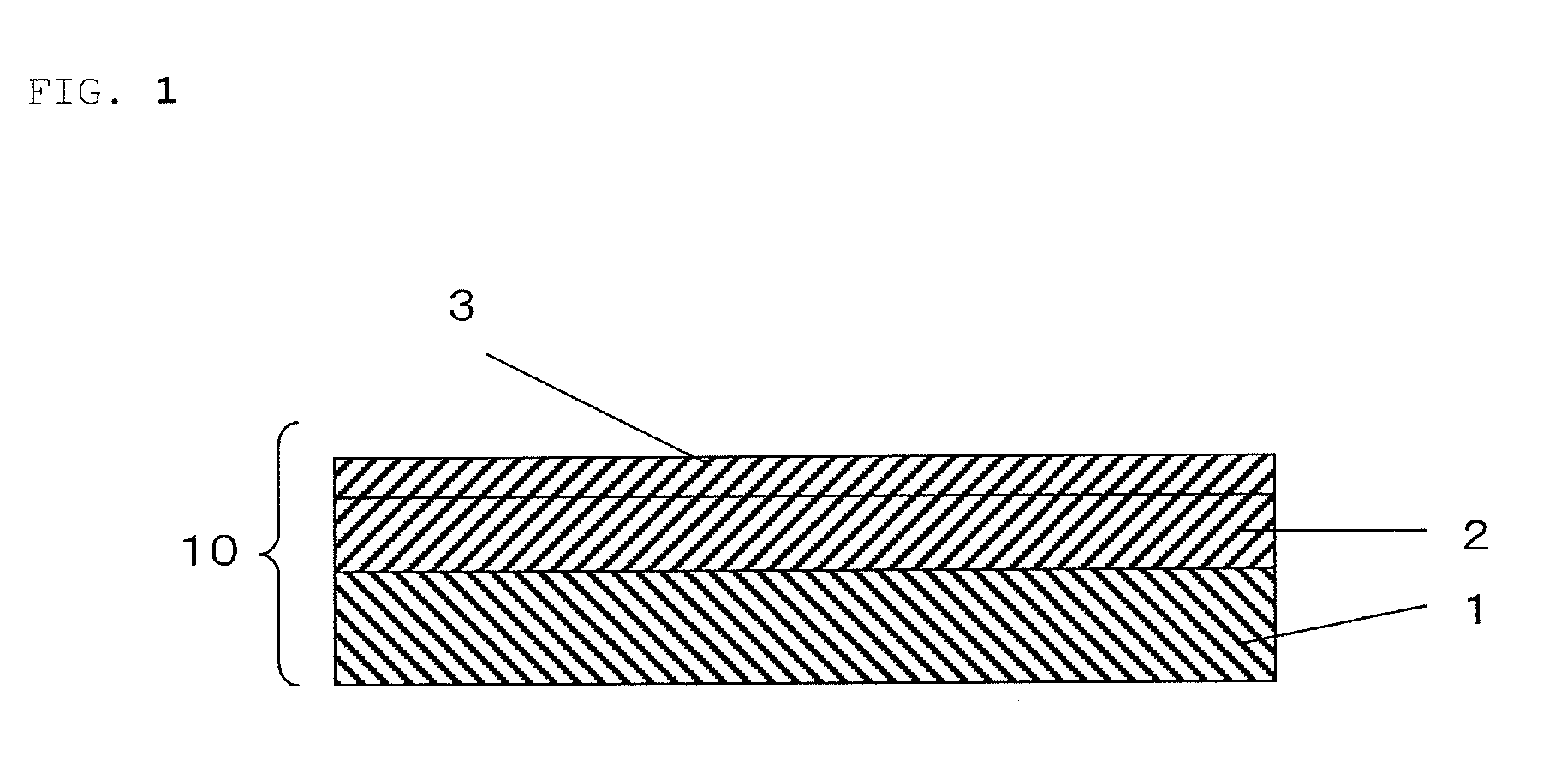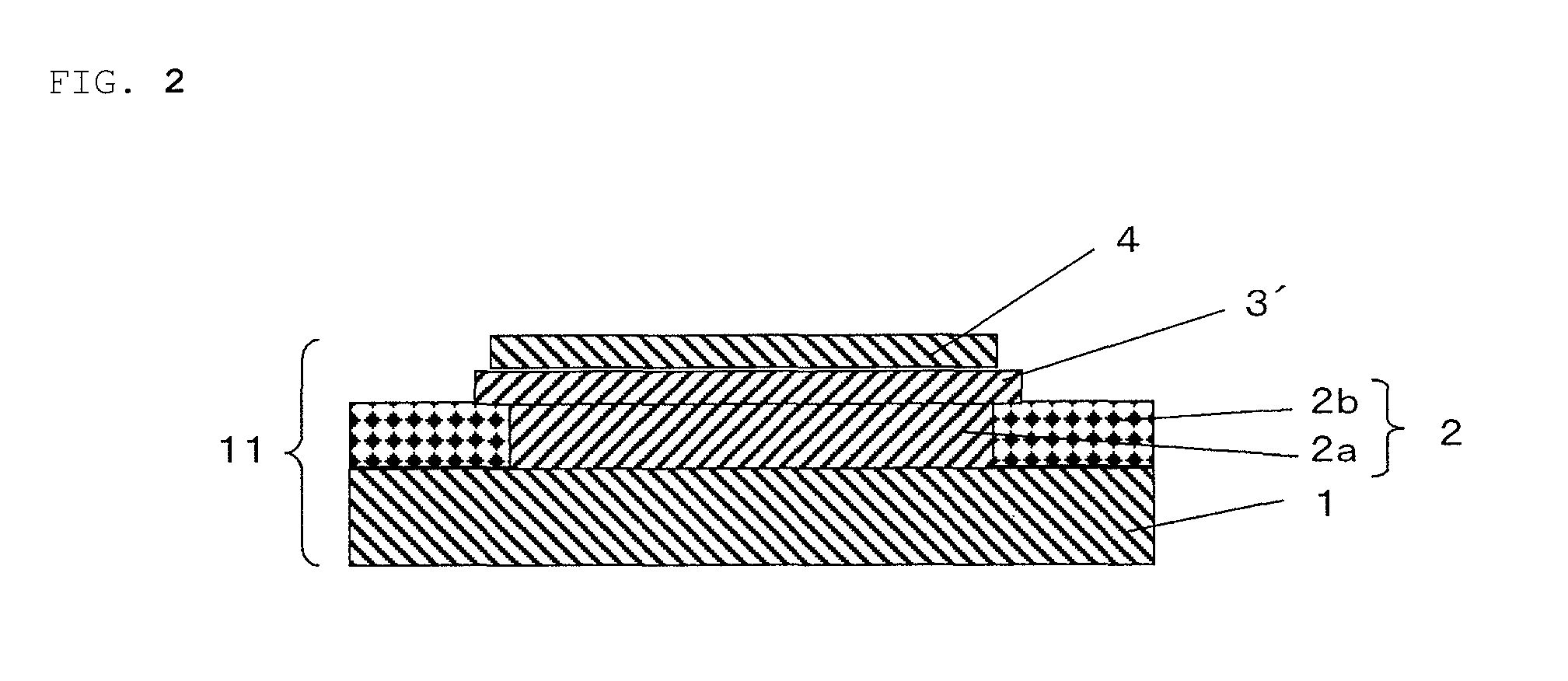Active energy ray-curable pressure-sensitive adhesive for re-release and dicing die-bonding film
a technology of pressure-sensitive adhesives and active energy rays, which is applied in the direction of film/foil adhesives, semiconductor/solid-state device details, transportation and packaging, etc., can solve the problems of difficult to level the adhesive layer, difficult to express the above-mentioned characteristics, and long time-consuming work, etc., to achieve easy handling, low influence on the environment or the human body, and high pressure-sensitive adhesiveness
- Summary
- Abstract
- Description
- Claims
- Application Information
AI Technical Summary
Benefits of technology
Problems solved by technology
Method used
Image
Examples
example 1-1
Production of Dicing Film
[0321]90 Parts of 2-ethylhexyl acrylate (hereinafter referred to as “2EHA”), 10 parts of acrylic acid (hereinafter referred to as “AA”), 0.2 part of benzoyl peroxide, and 150 parts of ethyl acetate were loaded into a reaction vessel provided with a condenser, a nitrogen-introducing pipe, a temperature gauge, and a stirring apparatus, and then the mixture was subjected to a polymerization treatment in a stream of nitrogen at 61° C. for 6 hours. Thus, an acrylic polymer A was obtained.
[0322]12.8 Parts (95 mol % with respect to AA) of 2-vinyl-2-oxazoline (hereinafter referred to as “VO”) were added to the acrylic polymer A, and then the mixture was subjected to an addition reaction treatment in a stream of air at 50° C. for 48 hours. Thus, an acrylic polymer A′ was obtained. The acrylic polymer A′ had a glass transition temperature of −49° C.
[0323]Next, 4 parts of a polyisocyanate compound (tradename “Coronate L,” manufactured by Nippon Polyurethane Industry Co...
examples 1-2 to 1-5
[0337]Dicing die-bonding films (1-2) to (1-5) were each produced in the same manner as in Example 1-1 except that the composition and the contents were changed to those shown in Table 2.
[0338]The resultant dicing die-bonding films (1-2) to (1-5) were subjected to various evaluations. Table 2 shows the results.
example 2-1
Production of Dicing Film
[0342]87 Parts of 2-ethylhexyl acrylate (hereinafter referred to as “2EHA”), 12 parts of 2-vinyl-2-oxazoline (hereinafter referred to as “VO”), 1 part of 2-hydroxyethyl acrylate (hereinafter referred to as “HEA”), 0.2 part of benzoyl peroxide, and 150 parts of ethyl acetate were loaded into a reaction vessel provided with a condenser, a nitrogen-introducing pipe, a temperature gauge, and a stirring apparatus, and then the mixture was subjected to a polymerization treatment in a stream of nitrogen at 61° C. for 6 hours. Thus, an acrylic polymer A was obtained.
[0343]8.5 Parts (95 mol % with respect to VO) of acrylic acid (hereinafter referred to as “AA”) were added to the acrylic polymer A, and then the mixture was subjected to an addition reaction treatment in a stream of air at 50° C. for 48 hours. Thus, an acrylic polymer A′ was obtained. The acrylic polymer A′ had a glass transition temperature of −50° C.
[0344]Next, 4 parts of a polyisocyanate compound (tr...
PUM
| Property | Measurement | Unit |
|---|---|---|
| glass transition temperature | aaaaa | aaaaa |
| glass transition temperature | aaaaa | aaaaa |
| glass transition temperature | aaaaa | aaaaa |
Abstract
Description
Claims
Application Information
 Login to View More
Login to View More - R&D
- Intellectual Property
- Life Sciences
- Materials
- Tech Scout
- Unparalleled Data Quality
- Higher Quality Content
- 60% Fewer Hallucinations
Browse by: Latest US Patents, China's latest patents, Technical Efficacy Thesaurus, Application Domain, Technology Topic, Popular Technical Reports.
© 2025 PatSnap. All rights reserved.Legal|Privacy policy|Modern Slavery Act Transparency Statement|Sitemap|About US| Contact US: help@patsnap.com



